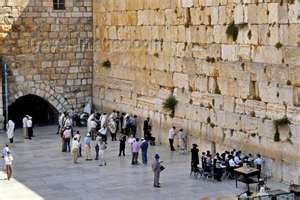Today’s Daf Session is sponsored by
Mr. and Mrs. Eli and Leba Weissmann, Clifton NJ
What is the significance of Kaddish? What does Yehey Shimey Rabboh really mean? Why is Kaddish in Aramaic?
In this session we discover the divisions of the night. The Talmud continues with a story about Rabbi Yosi, which includes great insight into the statement Yihey Shemey Rabboh of Kaddish.
For Hebrew text in pdf please click here
Quick Review:
Hashem “roars” / “coos” regularly lamenting loss of Bais Hamikdash and exile of Klal Yisroel
Hashem values “Yehey Shimey Rabboh” tremendously
Reasons not to enter a ruin: Reputation, visible / not visible Safety
Points you don’t want to miss:
Tosfos (on the bottom of 3a) explores the reason that Kaddish is in Aramaic. Some suggest that it is so holy that “it is written in a language that the angels don’t understand.” Tosfos suggests that it was written in Aramaic because that was the language the people spoke. This way people would understand this treasured prayer.
***********************************
Moshe described the final plague as coming “KaChatzos” approximately at Midnight. The Talmud (3b-4a) explores why Moshe didn’t speak in precise terms, “At Midnight.” The Talmud offers a number of possibilities. Perhaps Moshe didn’t know the precise moment of Chatzos. Even though Hashem knows the precise moment, but Moshe wouldn’t be able to pinpoint it, so he avoided going on record with that precision. Another possibility is that Moshe did know the precise moment, but the astrologers of Paroh weren’t that precise, and Moshe was concerned that for a few moments they would think his prophecy was wrong, as the plague had not (yet) come. A third possibility is that Moshe was speaking to the people in anticipation of the plague, on the previous day. Moshe said, “Like this time,” in which case the word “KaChatzos” is not taken to mean “like this time” as in approximately, but rather “like this time” tomorrow, in a precise way.
*************************************


Thank you for this wonderful series. And thank you for the opportunity to post out own observations.
On 3b I was struck by the fact that Dovid set up his “alarm clock” as music. Certainly that is a nice way to wake up! Too many people wake up to the news, which might actually encourage us to press “snooze” if it is too discouraging.
I am reminded of a memory of Rabbi Reuvein Feinstein who related that as a child, his father, Reb Moshe, would warm the boys’ clothing on the radiator before waking them in the winter, so that they could wake and dress comfortably. Now that is a pleasant, loving way to get woken up!
Hi Rabbi,
I really enjoyed the way you transcribed the class on Brachos 2, but you didn’t do it for this page, and I find it hard to follow without the English. Any suggestions?
Rabbi Rhine’s Reply- Great Norman! Glad to have you in the group! Correct, I only was able to transcribe the first one as a sample, because it takes a lot of time. If you found that helpful, I think you will find the ArtScroll Schottenstein Talmud most helpful. It comes in two sizes: Daf Yomi Edition (which is a bit smaller) and Full Size. You would be looking to start with Volume one, which is Brachos 1, available at https://www.artscroll.com/Books/9781578196005.html , or by calling 1-800-637-6724. Wishing you much success in your studies! RMR